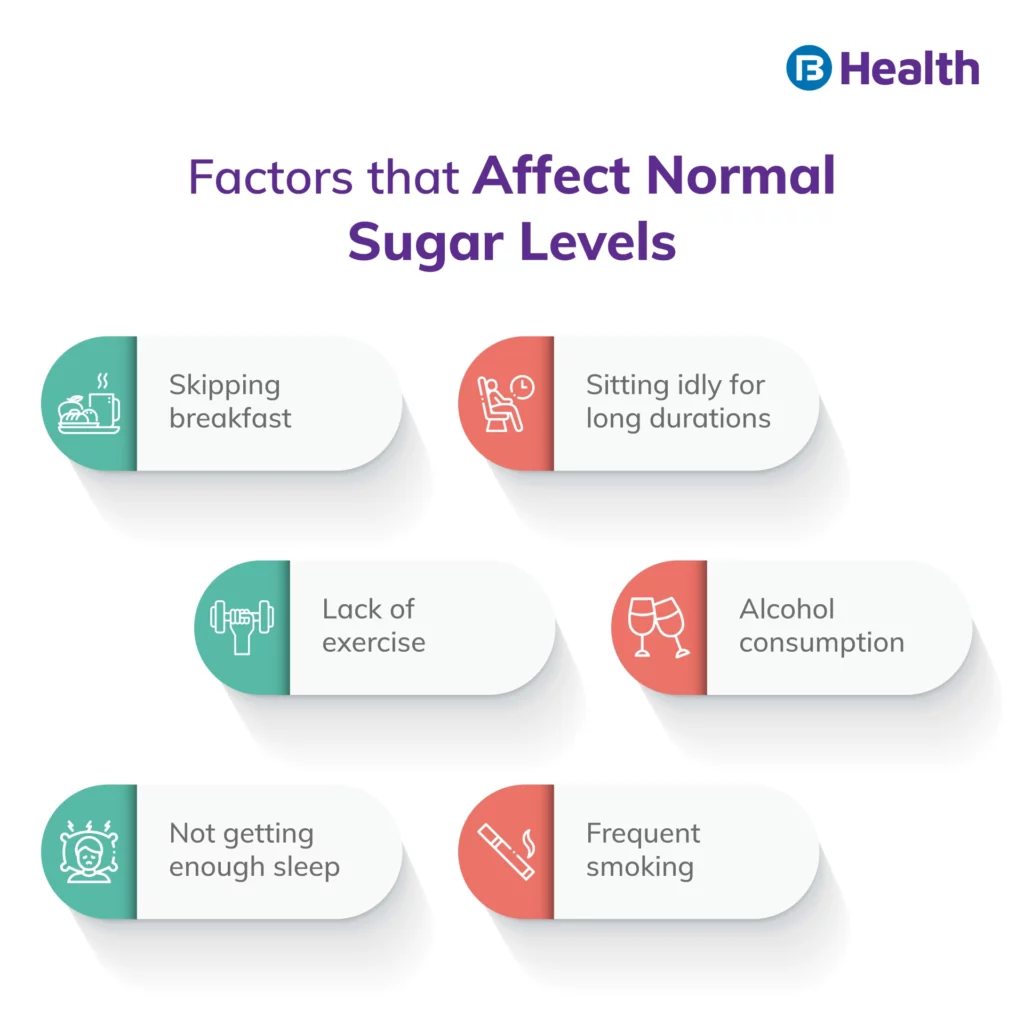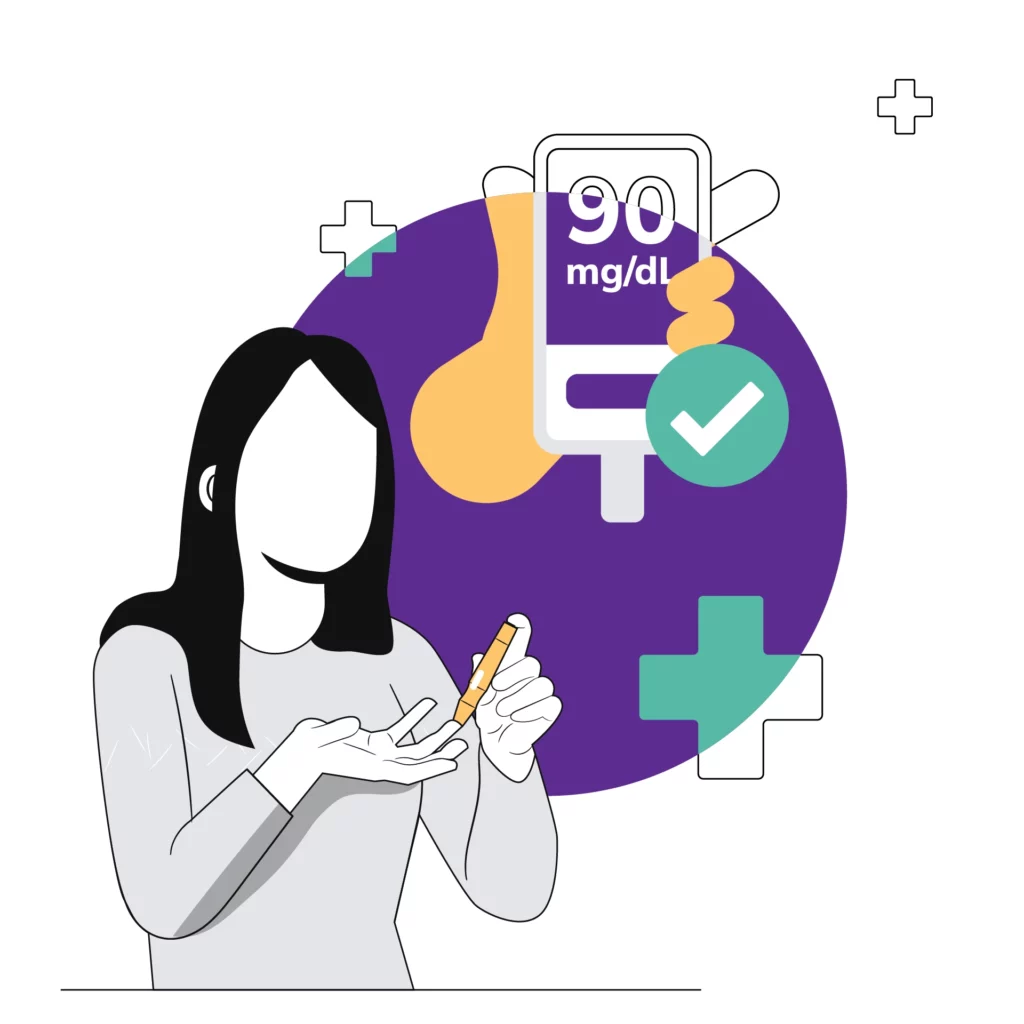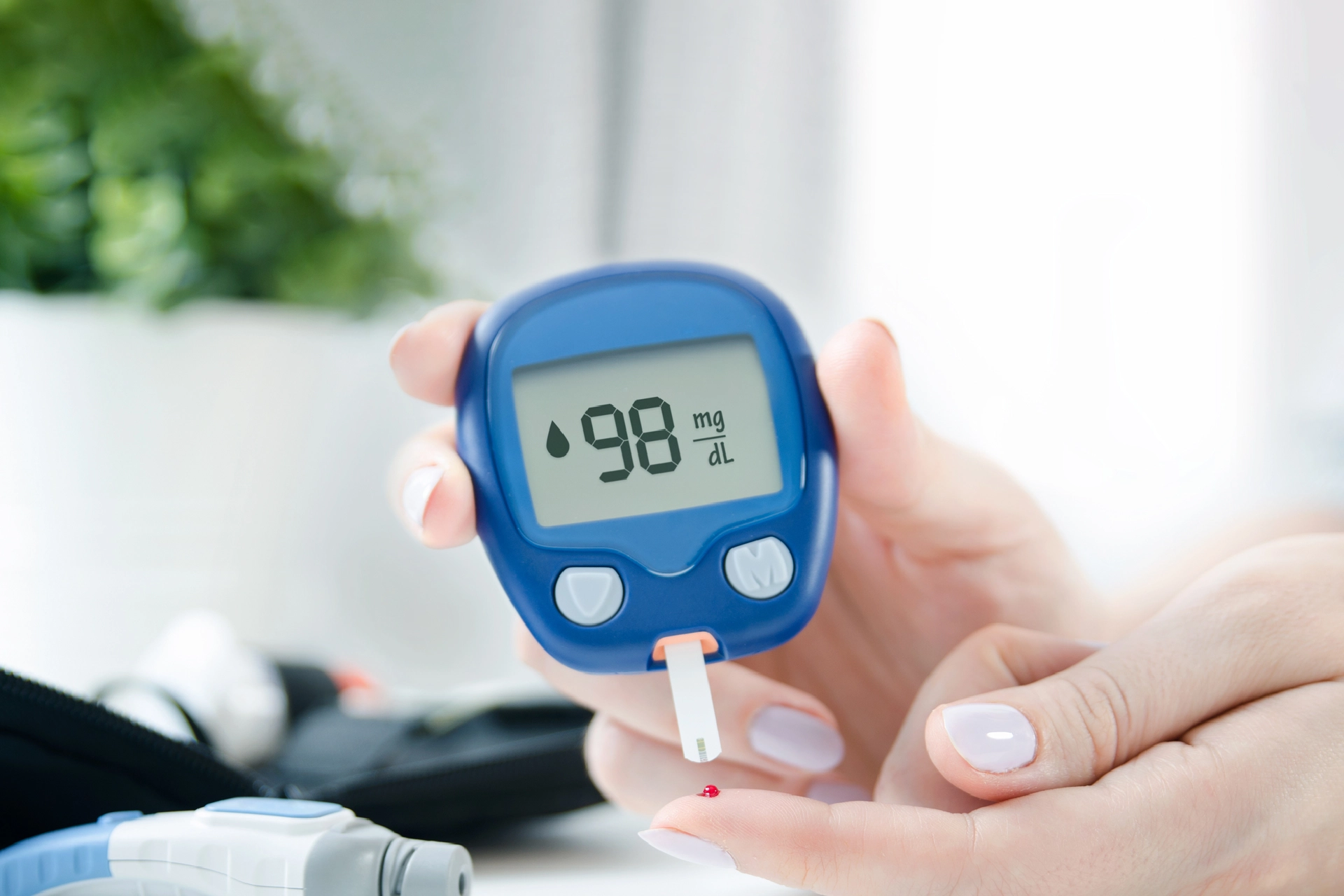General Health | 7 min read
Blood Sugar Level: Normal Range and Why Does It Matter
Medically reviewed by
Table of Content
Synopsis
Maintaining glucose or sugar levels in your blood is crucial. Sugar levels getting too low or too high can lead to several serious issues. Keep reading this blog to learn more interesting facts about this topic.
Key Takeaways
- 70-99 mg/dl is the normal sugar level of a healthy adult after an eight-hour fasting
- There are several methods like the conventional home glucose testing to test sugar levels from home
- Blood sugar levels fluctuate because of several factors, including stress, exercise, diet, smoking, medications, etc
Maintaining normal blood sugar levels is simple enough, provided a healthy diet and lifestyle. Nonetheless, low or high glucose levels can indicate medical issues that require attention. So, it is crucial to understand what is normal sugar levels and how to maintain them.
Controlling blood sugar levels is essential for preventing or postponing serious health problems such as heart disease in the long run., vision loss, and kidney problems. Maintaining what is normal sugar levels also improves a person's energy and happiness in addition to preventing the development of various diseases.
Normal Blood Sugar Range for Adults
If you are wondering what is normal sugar levels, then you must learn that the levels of glucose or blood sugar might be low, high, or normal in healthy adults. Generally, blood sugar levels should be checked eight hours after eating. Although the term "normal" is often used to define blood sugar levels in people who do not have diabetes, it is technically incorrect.
This is due to the fact that blood sugar spikes can still happen to people without diabetes, especially after eating. As their bodies are unable to produce or use insulin correctly, people with diabetes need to check their levels of blood sugar and administer sufficient insulin or glucose-lowering medication to maintain a healthy balance.
Normal blood sugar ranges in people:
- After 8 hours of fasting, a healthy adult (male or female) should have blood sugar levels that are less than 70-99 mg/dl. A diabetic's normal blood sugar levels might be anything from 80 and 130 mg/dl
- Also, a healthy person's normal blood sugar after two hours of eating would be less than 140 mg/dl, while a diabetic person's normal blood sugar can be below 180 mg/dl
As blood sugar levels fluctuate throughout the day, it's essential to understand the key components that contribute to these changes.
- Food Preferences: The blood sugar levels might be affected by the food we eat. For instance, eating rich, high-carb, or high-calorie foods may result in higher blood sugar readings
- Overeating: The amount of food we eat can also have an impact on normal glucose levels. Overeating may also raise blood sugar levels
- Exercise: For instance, prolonged, strenuous work may lower blood sugar levels, whereas minimal or no physical activity may raise them
- Medications: Regular blood sugar levels may also alter due to medical diseases like hypoglycemia, liver disease, etc
- Alcohol consumption: Drinking alcohol can result in a decrease in the good sugar level reading.
- Smoking: Nicotine is actively related to raising our blood sugar levels. Type 2 diabetes can result from smoking
- Age: Age causes a reduction in insulin tolerance, which raises the risk of developing diabetes
- Stress: Stress (both physical and mental) might cause an increase in the normal blood sugar level
- Dehydration: Blood sugar levels can also drop due to dehydration

Why Is Blood Sugar Important For Diabetes?
The glucose or sugar in your blood is known as blood sugar or blood glucose. Because sugar is an important source of energy, it is essential for our bodies.
The pancreas generates insulin, a hormone that regulates blood sugar levels. However, if you have diabetes, the body either does not generate enough insulin or does not use the insulin it produces adequately. It thus increases blood sugar levels, which, if untreated, can result in several major health problems.
High blood sugar can damage your blood vessels and internal organs, which can also cause heart disease, stroke, renal disease, blindness, and amputation. Because of this, knowing what is normal sugar levels and managing them is essential if you have diabetes.
Additional Read: Types of blood sugar testBlood Sugar Level Chart for Diabetic Adults
The table below shows what is normal blood sugar for people over the age of 20
| Time | Blood sugar levels (mg/dL) |
| Fasting | 70-100 |
| Before meal | 70-130 |
| 1-2 Hours After eating | Below 180 |
| Bedtime | 100-140 |
The table below shows what is a normal blood sugar level for pregnant Women
| Time | Blood sugar level (mg/dL) |
| Fasting | 70-89 |
| Before meal | 89 |
| 1-2 hours after eating | Below 120 |
| Bedtime | 100-140 |
What Is The Random Blood Sugar Test?
The Random Blood Sugar (RBS) test can be performed at any time of the day outside of the scheduled testing hours. Medical practitioners recommend utilizing this test to verify the existence of diabetes before and after diabetes therapy. A reading of 200 mg/dl or higher indicates diabetes mellitus.
The main goal of the RBS test is to check out random blood sugar levels. Through prompt observation during and after treatment, the test aids in the treatment of the disease. An individual should have a random blood sugar test if they experience any of the below symptoms:
- Hazy vision
- Unexplained Loss of weight
- Dehydration and dry mouth
- Slow healing of wounds
- Recurrent urination
- Fatigue [1]
What Does A Blood Sugar Chart Signify?
The below chart will help you understand what is normal sugar levels.Fasting
| Normal for those without diabetes | 70-99 mg/dl |
| Normal diabetic blood sugar levels (Oficial ADA Recommendation) | 80-130 mg/dl |
2 hours after eating
| Normal for those without diabetes | Below 140 mg/dl |
| Someone with diabetes (Oficial ADA Recommendation) | Below 180 mg/dl |
HBA1C
| Normal for those without diabetes | Below 5.7% |
| Someone with diabetes (Oficial ADA Recommendation) | 7% or less |
What Is An Ideal Blood Sugar Chart For Adults?
The below table shows what is a normal glucose level for adults.
| People without diabetes | People with diabetes | |
| Before eating | 72–99 mg/dl [3] | 80–130 mg/dl [4] |
| Two hours after eating | less than 140 mg/dl [5] | less than 180 mg/dl [6] |
A1C levels
What is an A1C test, and what are normal sugar levels(A1C)?
The average blood sugar levels over the previous three months are measured by an A1C test. [2] It can demonstrate whether long-term glucose management techniques are effective or not.
A person's A1C levels may be as follows, as per the National Institute of Diabetes and Digestive and Kidney Diseases (NIDDK):
| A person without diabetes | below 5.7% |
| A person with prediabetes | 5.7–6.4% |
| A person with diabetes | 6.5% or over |

Sugar Test At Home
Conventional home glucose testing
- Prick your finger with a little, sharp needle known as a lancet
- Put a bit of blood on a test strip
- Then, insert the strip into a meter
This process displays your blood sugar levels. After this, note the results so you may report them to your doctor.
The features, portability, speed, size, price, and readability of meters vary. Devices deliver results in less than 15 seconds and save this data for later use. Some meters can also compute an average level of blood sugar over time. Also, some have software kits that use data from the meter to show charts and graphs of your previous test results.
Meters that check other body parts
Several devices allow you to examine your thigh, upper arm, forearm, and thumb base for testing your blood sugar. These results could be different from blood sugar readings obtained by poking your fingertip. Fingertip levels display changes more quickly. This is particularly true when your blood sugar is rapidly changing, such as after a meal or an intense workout.
So, please do not depend on the results of tests conducted on other parts of your body if you experience signs of low blood sugar.
System for continuous glucose monitoring
A few of the gadgets that can monitor glucose level pair with insulin pumps. They are not as precise as glucose findings from a finger stick. Yet, they can assist you in identifying trends and patterns in your blood sugar levels. They are sometimes referred to as "interstitial glucose monitoring devices" by doctors. If you select this option, your doctor will use a small sensor beneath your skin to monitor your blood sugar every five minutes. Then, for a few days, it transmits information to a display you wear like a pager.
Additional Read: Diabetes Tests for a Healthy LifeLimit your intake of simple sugars and strive for a diet rich in whole plant-based foods, like fruit and vegetables, lean meats, whole grains, and nutritious plant-based fats to maintain a normal blood sugar level. Be wary of added sugars and maintain a well-balanced and active lifestyle. You can get a doctor consultation from Bajaj Finserv Health and learn more about what is normal sugar levels in Diabetes.
References
- https://www.voyagehealthcare.com/blog/10-signs-that-may-indicate-you-are-at-risk-for-diabetes
- https://www.niddk.nih.gov/health-information/diagnostic-tests/a1c-test
- https://www.diabetes.co.uk/diabetes_care/blood-sugar-level-ranges.html
- https://www.diabetes.org/healthy-living/medication-treatments/blood-glucose-testing-and-control/checking-your-blood-sugar
- https://www.diabetes.co.uk/diabetes_care/blood-sugar-level-ranges.html
- https://www.diabetes.org/healthy-living/medication-treatments/blood-glucose-testing-and-control/checking-your-blood-sugar
Disclaimer
Please note that this article is solely meant for informational purposes and Bajaj Finserv Health Limited (“BFHL”) does not shoulder any responsibility of the views/advice/information expressed/given by the writer/reviewer/originator. This article should not be considered as a substitute for any medical advice, diagnosis or treatment. Always consult with your trusted physician/qualified healthcare professional to evaluate your medical condition. The above article has been reviewed by a qualified doctor and BFHL is not responsible for any damages for any information or services provided by any third party.





